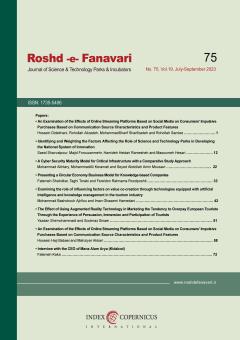An examination of the effects of online streaming platforms based on social media on consumers' impulsive purchases based on communication source characteristics and product features
Subject Areas : Technology Transfer and Commercialization of Researches
Hossein Hajibabaei
1
*
![]() ,
Mahziyar Akbari
2
,
Mahziyar Akbari
2
1 - Assistant Professor, Department of Business Administration, Faculty of Literature and Humanities, Malayer University, Malayer, Iran.
2 - Department of Business Administration, Faculty of Literature and Humanities, Islamic Azad University, Hamedan Branch, Hamedan, Iran.
Keywords: Impulsive purchases, online streaming, information source characteristics,
Abstract :
The increasing growth and development of new technologies based on Internet communication has caused the creation and formation of a highly interactive marketing communication channel in the context of social media. Online streaming based on social media is a new, efficient and attractive platform that in recent years we have seen an increase in its use for advertising purposes, which indicates the creation of countless opportunities for business growth in the context of these channels. Using the stimulus, organism, and response model, this research investigates the factors affecting people's impulsive purchases in online streaming platforms, focusing on the features of the streamer and the product itself. This research is applied, descriptive and survey, and collected information from the audience of online streams using an online questionnaire. The results of structural equation modeling showed that the attractiveness and expertise of the streamer (characteristics related to the source) have an effect on the perceived enjoyment, and things such as the perceived usefulness of the product, ease of purchase, and the price of the product (characteristics related to the product) have an effect and they influence the perceived usefulness, and the intention to buy without an individual's plan in online streaming environments

